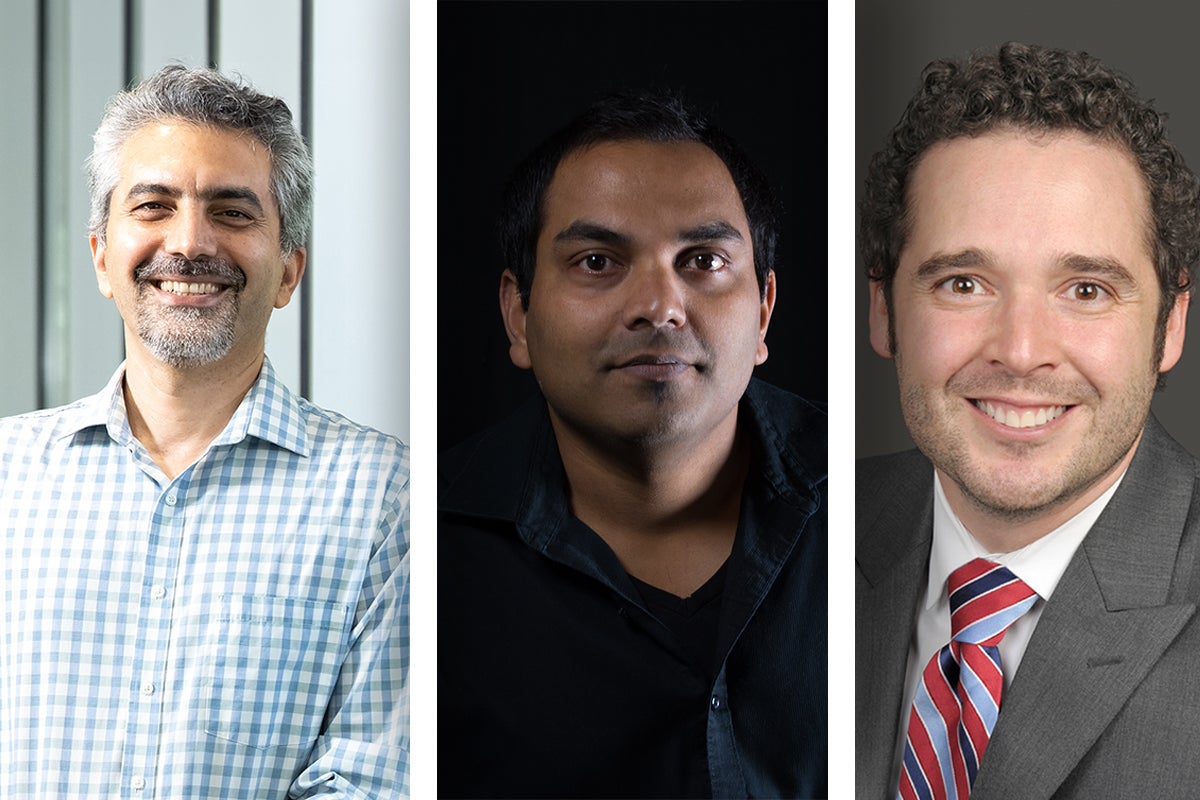Three research projects from the University of Central Florida have been selected for NASA awards designed to connect and promote research collaborations with NASA Mission Directorates.
A total of 18 projects received Phase I funding across 15 universities. UCF received the most awards, with all three housed within the College of Engineering and Computer Science. Dean Michael Georgiopoulos says this speaks to the quality of research produced by CECS faculty.
“I’m proud to see that three of our research teams have been recognized by NASA for their innovative ideas that can shape the future of air travel and space flight,” Georgiopoulos says. “Our college has built a rich history with NASA and this award further solidifies the partnership between our respective researchers.”
All Phase I award recipients will be eligible to compete for Phase II funding and University Leadership Initiatives and Small Business Innovation Research/Small Business Technology Transfer (SBIR/STTR) grants. Learn more about the projects below.
Project Title: Multimodal Wireless Piezoelectric Microsensors
Award Amount: $50,000
Researchers: Reza Abdolvand and Hakhamanesh Mansoorzare ’21PhD
The third time was the charm for the Artemis I launch. After two unsuccessful launch attempts due to dangerously high engine temperatures, a crack in the fuel tank insulation and multiple fuel leaks, the rocket finally soared into orbit off the Space Coast.
To prevent these issues from delaying future Artemis missions or other NASA space explorations, a team of UCF researchers is developing a wireless multimodal sensor module that can monitor conditions such as temperature, pressure, acceleration and airflow in real time.
The module, less than a cubic centimeter, will include multiple microelectromechanical systems (MEMS) resonators that will measure those conditions. MEMS resonators are often used for motion sensing, time referencing and signal filtering in electronic devices but show promise in the aerospace engineering field due to their light weight, highly accurate readouts and cost-effective manufacturing.
Although the sensors will be roughly the size of a pencil eraser, they will be able to withstand extreme temperatures since there is no battery or electronics in the device. This will be the first wireless multimodal sensor of its kind.
“Piezoelectric MEMS resonators can detect change in environmental parameters without the need for any auxiliary power source such as battery as they could be powered wirelessly by a remote transceiver unit,” says Reza Abdolvand, professor and chair of the Department of Electrical and Computer Engineering. “This will create a unique opportunity for development of compact and battery-less sensing units that could withstand a harsh environment.”
Once manufactured, the sensing system can be used across various NASA missions to detect dangerous temperatures in critical spacecraft components, monitor the pressure in fuel tanks to prevent leaks, measure the temperature and pressure of lunar regolith, and assess the climate conditions for takeoff.
Project Title: SUPERSAF-SAF for Low Emission Supersonic Transport
Award Amount: $50,000
Researchers: Subith Vasu, Justin Urso, Ramees Khaleel Rahman, Gihun Kim
Supersonic commercial aircraft may be able to fly faster than the speed of sound and reduce the time for transatlantic journeys considerably, but their ultra-fast flights powered by fossil fuels could have a harmful effect on the environment. Mechanical and Aerospace Engineering Professor Subith Vasu and his team of postdoctoral scholars aim to protect the environment by studying the emissions of sustainable aviation fuels (SAFs), a greener alternative made from sustainable resources such as wood residues, fatty acids, fermented sugars and processed alcohols.
Several government agencies have started to test these fuels for emissions.
The team in the Vasu Lab will conduct shock tube experiments to test the NOx and soot emissions of several different SAFs. That data will be used to improve the aviation industry’s and NASA’s current chemical kinetic models that can predict the soot and NOx output of various SAFs in flight conditions.
“The data we collect could significantly improve the current chemical kinetic model and advance the production of combustors for supersonic flights,” Vasu says.
The research is timely, given NASA recently awarded contracts to both Boeing and Northrop Grumman to develop technology roadmaps and concept vehicles for supersonic aircraft. Vasu plans to work with industry partners on this research and to seek additional funding from NASA beyond the MPLAN grant.
Project Title: A CNS Digital Twin Framework for AAM
Award Amount: $50,000
Researcher: Adan Vela
Airplanes and helicopters are often spotted in the sky, but in the future, cargo-loaded drones and passenger-carrying air taxis might become a common sight. Through NASA’s Advanced Air Mobility (AAM) mission, the organization aims to create a safe and accessible aerial transportation system that can send cargo or people to hard-to-reach areas or even tourist destinations.
However, before AAM can take flight, engineers must address fundamental challenges of the communication, navigation and surveillance (CNS) system that supports control, command and collision of these vehicles, as they could face challenges from the low altitude at which they fly or the lack of a human pilot. Buildings or terrain could distort or delay important CNS signals such as GPS or 5G.
To better understand this problem, Industrial Engineering and Management Systems Assistant Professor Adan Vela will develop the CNS-AAM simulation engine, a digital twin framework that mimics the CNS system that the AAM would require. With the aid of computer science students, Vela will create the simulation engine in Python. The resulting framework will allow NASA, the FAA and researchers around the world to digitally develop and test new artificial intelligence algorithms that manage aircraft and CNS technologies, including cybersecurity measures that could protect UAVs from malicious attacks.
If you’re an engineering student interested in working on this project, contact Associate Professor Adan Vela at adan.vela@ucf.edu.




